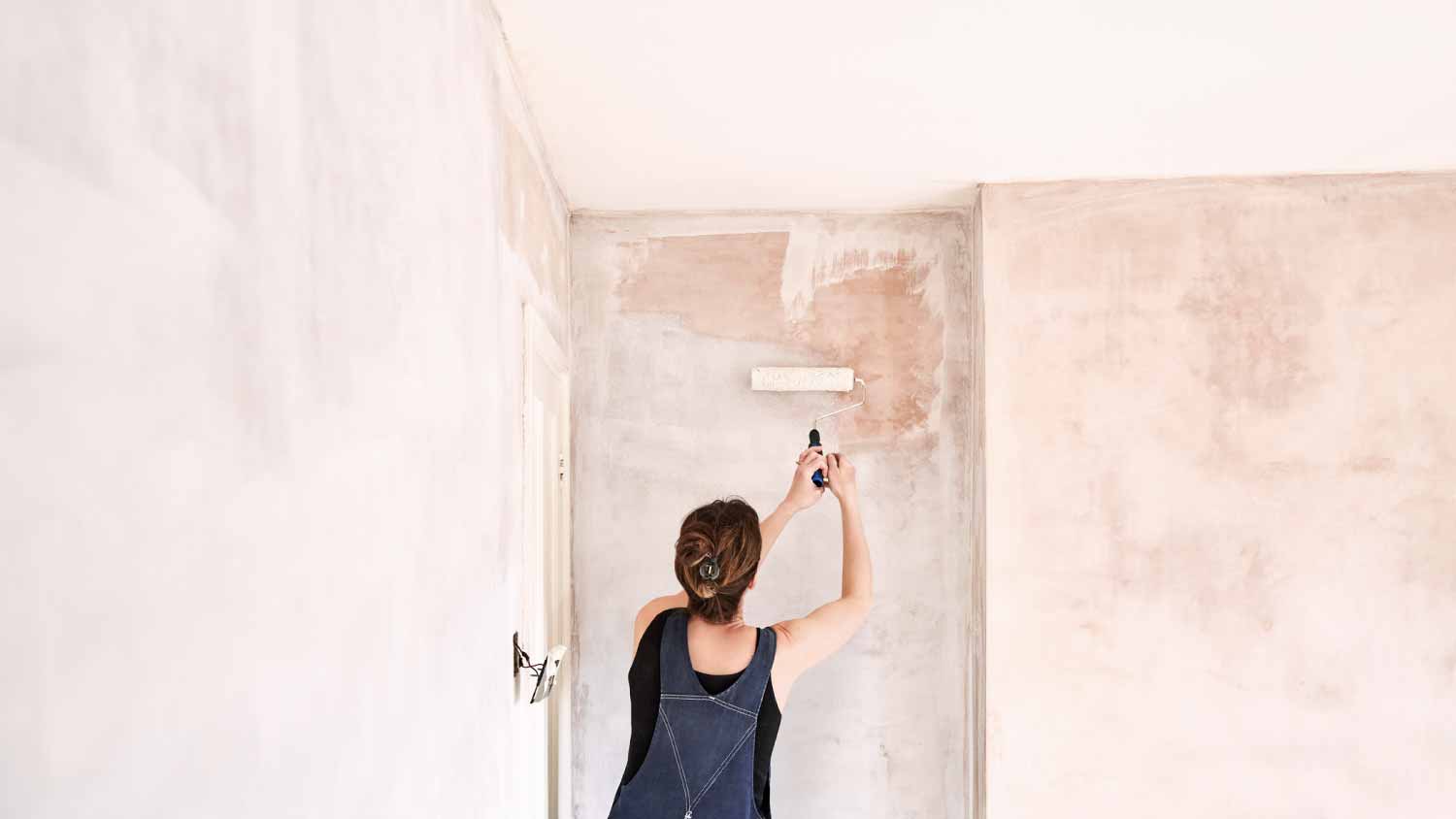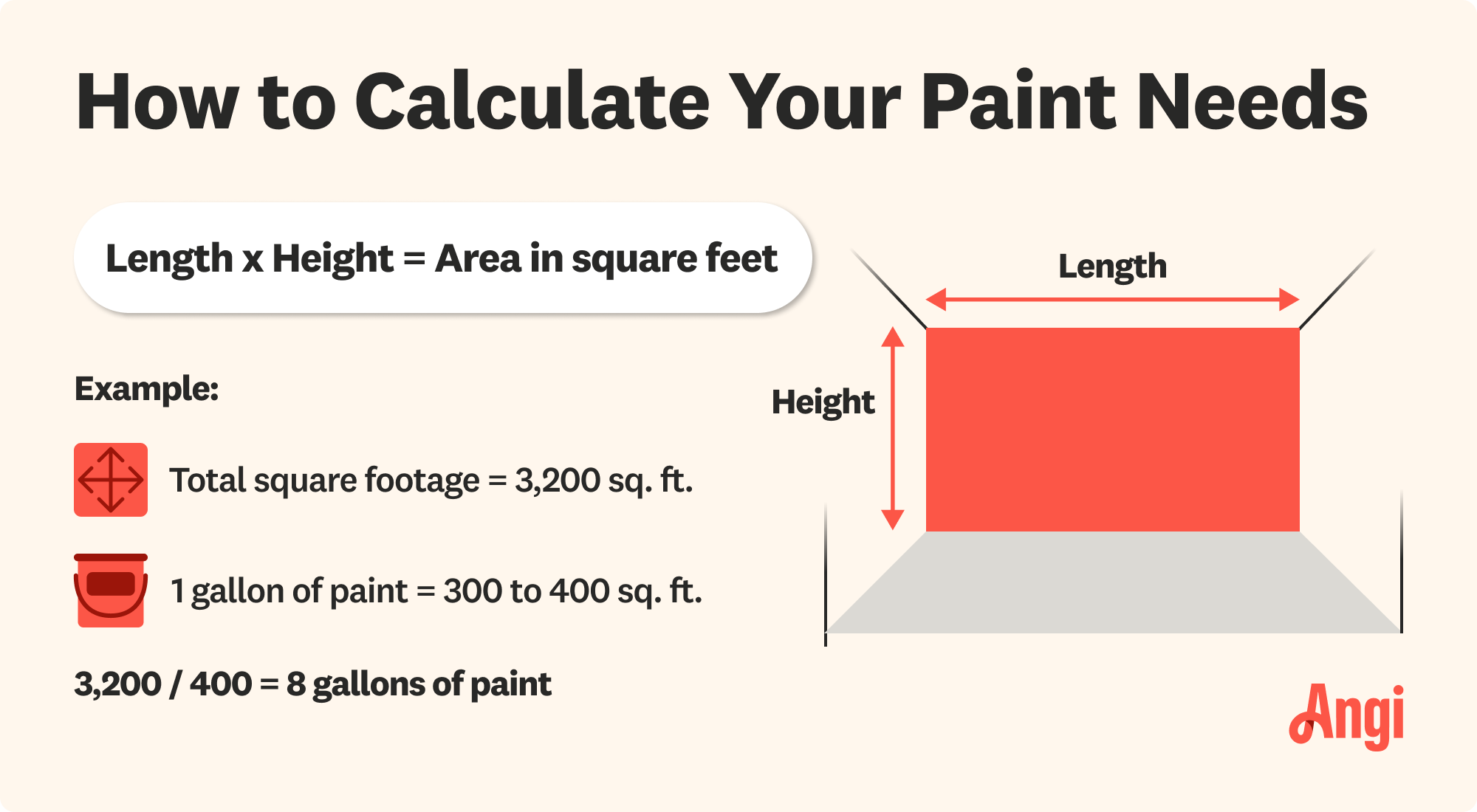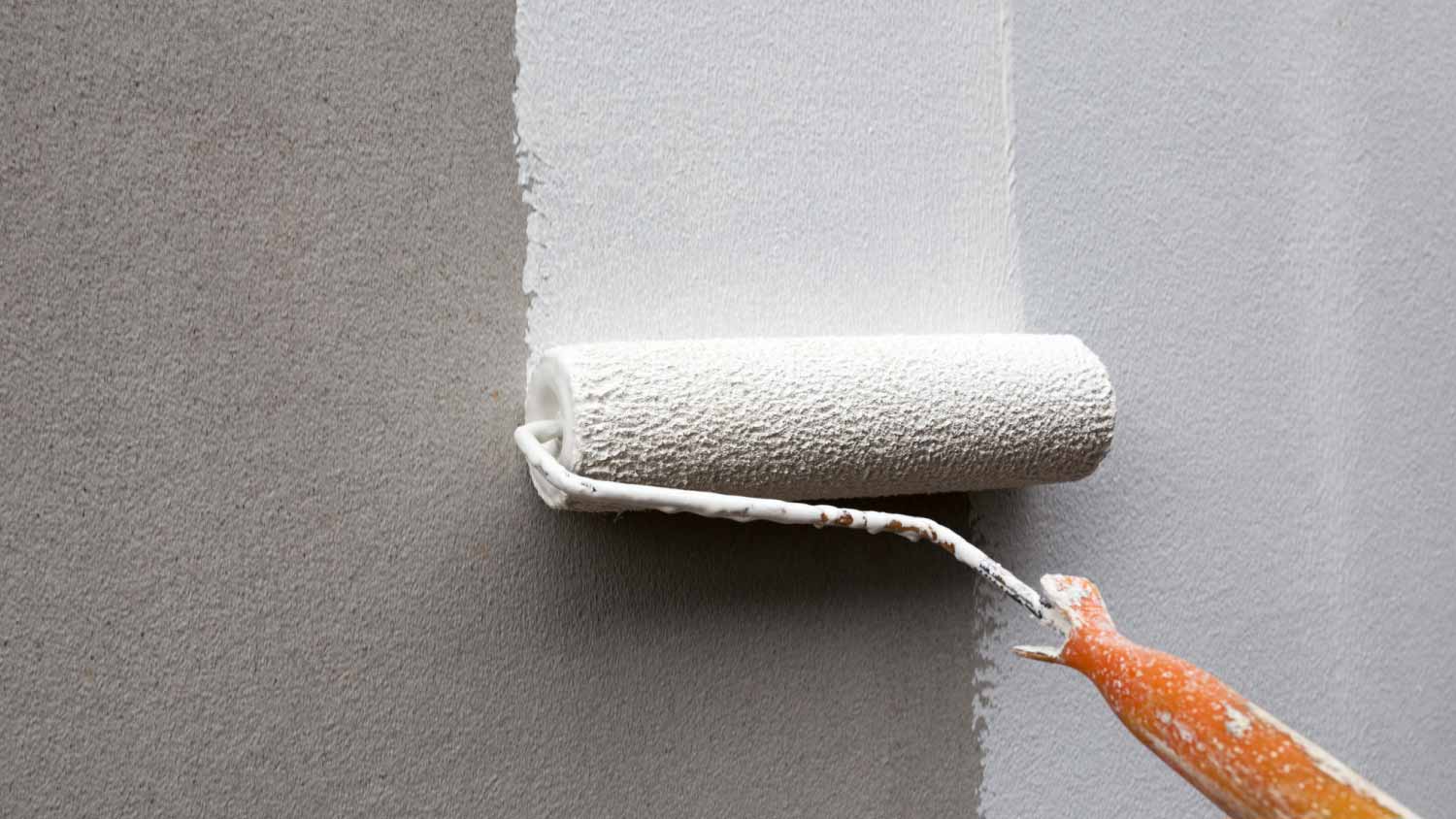
Limewash can add timeless texture to your living space. The cost to limewash interior walls depends on factors like surface area, materials, and prep work.
Interior painting costs depend on your project and location. Check with a local pro for your specific job.
The cost to paint the interior of a house in Washington, D.C. varies with home size, averaging $1,250 to $19,500 based on square footage.
Higher-priced paints, like semi-gloss, VOC-free, or high-gloss options, run $35 to $90 per gallon, significantly increasing material costs in D.C. homes.
Labor accounts for 75% to 95% of D.C. homeowners’ interior painting project costs.
As a higher-cost-of-living area with a mix of historic rowhomes and contemporary condos, homeowners in Washington, D.C., should budget carefully for interior painting. Painting a home in the District costs $2,120 on average, but most projects range from $1,045 to $3,196. Factors like room size, older plaster walls, paint quality, and the detailed prep work often required in D.C. homes can influence the final price. Keep reading to learn what to expect when planning your project.
Understanding interior painting cost factors in Washington, D.C., can help you budget effectively. From home size and paint type to architectural details and how much paint you need, several elements influence project pricing throughout Washington, D.C.

Across the country, the average cost to paint the interior of a house is $2.75 per square foot. If you include walls, trim, and ceilings, the cost per square foot is $4.70. To get the most accurate quote, have your square footage ready when speaking with a pro. For reference, an average room is 10-by-12 feet. If you’re embarking on a whole-house interior painting project, check out the cost to paint a home interior by square footage, ranging from $2 to $6 per square foot:
| Square Footage | Average Cost |
|---|---|
| 500 | $1,250–$3,250 |
| 800 | $2,000–$5,200 |
| 1,000 | $2,500–$6,500 |
| 1,200 | $3,000–$7,800 |
| 2,300 | $5,750–$14,950 |
| 2,500 | $6,250–$16,250 |
| 3,000 | $7,500–$19,500 |
While browsing the paint aisle or speaking with your pro, you’ll notice that paint costs $15 to $40 per gallon, depending on the brand and paint finish. If you have your heart set on a specific brand or type of paint, it can quickly raise the price. Long-lasting, high-gloss, and stain-blocking or mold-resistant paint often costs more and can push up your material costs.
The average home needs six gallons of paint per coat, excluding primer, so keep that in mind before filling up your cart.
| Paint Type | Average Cost per Gallon |
|---|---|
| Primers | $20–$40 |
| Flat paint | $25–$50 |
| Semi-gloss interior paint | $35–$70 |
| High-gloss enamel paint | $40–$90 |
| VOC-free paint | $40–$80 |
Oil-based paints contain higher volatile organic compounds (VOCs) than latex paints. To limit your exposure to VOCs while painting indoors, keep the area well-ventilated, wear respiratory protection, and avoid the painted area for at least 72 hours once finished.
Painting costs vary for different surfaces. Whether you're planning to refresh your walls, revive your ceilings, or give your trim a new lease on life, knowing the average expenses per surface type can help you budget effectively. In addition to walls and ceilings, you may also choose to paint baseboards and trim or paint an accent wall.
Adding an accent wall increases your budget by 20% to 30% to cover the cost of additional paint and materials. Choosing to add an accent wall will also require additional taping and drying time, so the cost to paint an accent wall will sit higher than a wall that matches the others in your home.
| Surface Type | Average Cost |
|---|---|
| Baseboard and trim | $2–$6 per linear foot |
| Hard-to-reach areas | $7–$10 per sq. ft. |
| Smooth ceiling | $2–$4 per sq. ft. |
| Walls | $1.50–$3.50 per sq. ft. |
| Accent walls | $3–$8 per sq. ft. |
There are a few extra considerations to keep in mind when budgeting for interior painting, most of which focus on the existing features in your home.
If the interior of your home features unique architectural designs such as archways or columns, painting these will affect the cost. Due to the complexity of the areas, the increase in cost is labor-focused, as it takes greater attention to detail to make them shine.
Another important thing to consider is your ceiling height. Walls under standard 8-foot ceilings will be the most affordable to paint, and they fall on the lower end of the cost to paint a ceiling range. Taller walls, especially those under cathedral ceilings, will often require scaffolding and additional safety equipment to paint. These can drive up your labor costs even beyond what the additional coverage will add.
If a wall requires sanding and patching, the cost for wall prep is between $0.50 and $0.75 per square foot. This prep work is vital for a smooth finish on your wall, so a pro can apply paint flawlessly.
Some paint contractors bundle the prep work into their hourly or per-square-foot charges. If a room requires drywall fixes before the paint can glide on, drywall repair costs can add an average of $600 to your budget, depending on the severity.
You may need to use a primer before painting your walls, especially if you’re painting over a dark shade with a light one. Paint primer helps the paint adhere more effectively, resulting in longer-lasting paint jobs and reducing how often you need to paint your home. Primer costs $10 per quart and covers 100 square feet with a single coat. Depending on your walls, you might need multiple coats of primer.
Adding textured walls to create a richer look can hide paint flaws and add some depth to your space, but prepare to increase your painting budget by up to 50% for this premium technique. Textured walls can require double the amount of paint as a smooth wall. Before hiring a professional painter, ensure that they offer this specialized service.
Removing wallpaper costs $3 per square foot. In a 12-by-12-foot room, expect to pay $535 to tear down wallpaper.
Expect to pay between $1 and $2 per square foot to remove a popcorn ceiling. Once your professional removes your popcorn ceiling, extra costs for texture, painting, or other refinishing options will add to the final total. Contact a popcorn ceiling removal pro near you for assistance.
Refreshing your home’s interior in Washington, D.C., comes with unique factors that influence pricing, from higher labor rates and cost of living to building age, humidity levels, and the detailed prep often required in older District homes.
Professional interior painters in Washington, D.C. include the cost of labor in the total estimate, which often accounts for 75% to 95% of the total cost. In Washington, D.C., labor tends to run higher due to the city’s elevated cost of living, dense housing layouts, and the extra prep often required in older rowhomes and condos. While there’s no substitute for a professional paint job, you can cut down on labor costs by patching and prepping your walls so they’re ready for painting when the pros arrive.
While you’re budgeting for an interior refresh, you might want to consider the following add-on services to maximize the impact and increase home value even further.
Cost to replace light fixtures: $150 to $1,000
Cost to install crown molding: $600 to $2,100
Cost to refinish wood flooring: $1,100 to $2,700
Cost to replace interior doors: $360 to $1,200
Cost to replace windows: $3,400 to $11,700
Cost to replace kitchen cabinets: $2,000 to $11,000
Knowing the best time to paint can help improve results and manage costs. In Washington, D.C., late spring through early fall offers ideal temperatures and lower humidity, helping paint dry faster and reducing labor time. Winter or peak-summer projects may require heaters, slow-drying formulas, or longer drying periods, which can increase your overall painting costs.
Interior painting remains one of the highest-value upgrades for homeowners in Washington, D.C., offering an average return on investment (ROI) of 107%. In a competitive market where buyers expect well-maintained, move-in-ready homes, fresh, neutral paint can significantly boost appeal. Updated walls help highlight natural light in rowhomes and condos, signal proper upkeep in older properties, and reduce the buyer’s perceived maintenance workload.
Quality paint also performs better against D.C.’s humidity swings, improving durability and reducing future touch-ups. Combined, these factors make interior painting a cost-effective way to enhance both property value and buyer interest in the District.
Home is the most important place on earth, which is why Angi has helped more than 150 million homeowners transform their houses into homes they adore. To help homeowners with their next project, Angi provides readers with the most accurate cost data and upholds strict editorial standards. We’ve surveyed thousands of real Angi customers about their project costs to develop the pricing data you see, so you can make the best decisions for you and your home. We pair this data with research from reputable sources, including the U.S. Bureau of Labor Statistics, academic journals, market studies, and interviews with industry experts—all to ensure our prices reflect real-world projects.
Want to help us improve our cost data? Send us a recent project quote to [email protected]. Quotes and personal information will not be shared publicly.
From average costs to expert advice, get all the answers you need to get your job done.

Limewash can add timeless texture to your living space. The cost to limewash interior walls depends on factors like surface area, materials, and prep work.

Refinishing stairs is a great way to spruce up one of a home's most dominant focal points. High-quality wood should be allowed to shine. Learn the cost to refinish stairs in this guide.

An accent wall is a great way to elevate any room. Find out how much it costs to paint an accent wall and what factors affect how much you’ll pay.

Have an old piece of wood furniture that desperately needs a refresh? Learn how to paint over stained wood and if this is a DIY project well-suited for you.

Sick of staring at popcorn walls or faux stucco? This guide will show you how to remove texture from walls like a pro. Here’s what you need to know.

Wondering how much it costs to stripe a parking lot? Learn about average prices, key cost factors, and tips to save on your next parking lot striping project.